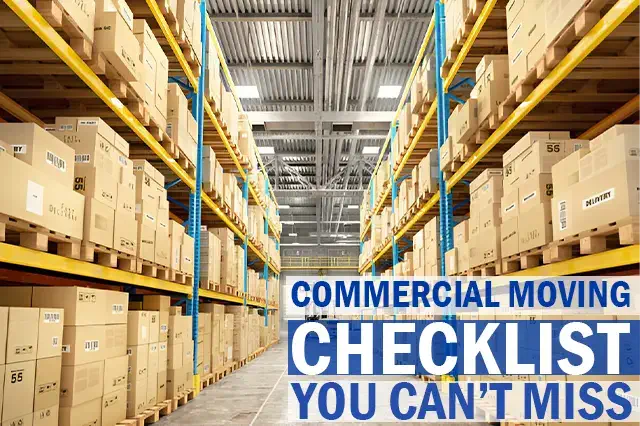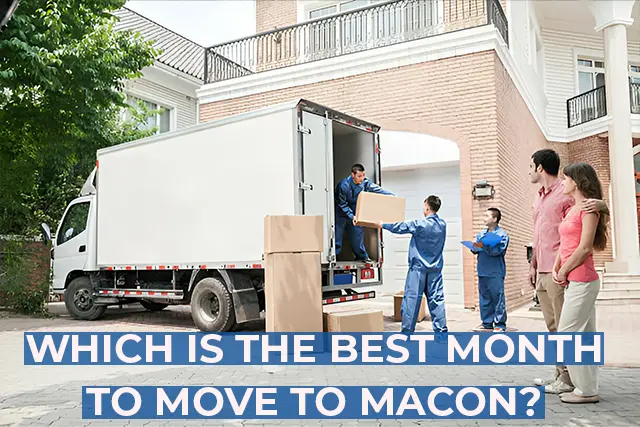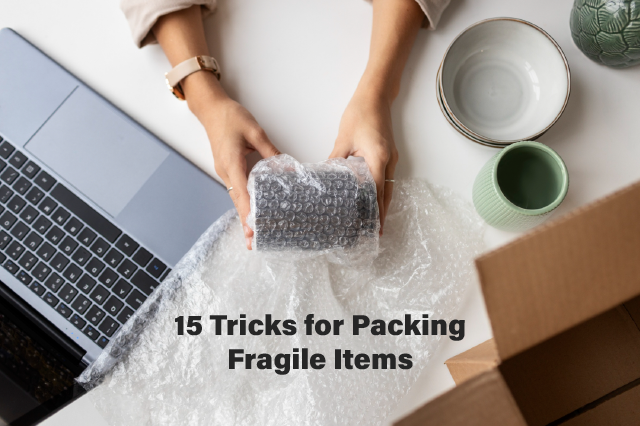
Commercial Moving Checklist – You Can’t Miss
Moving your business is a big deal. So many things need to be considered and planned for. That’s why it’s crucial to have a checklist for commercial moving services. Miss one important step and your move could turn into a disaster.
This checklist will guide you through the entire process step-by-step. From getting the right permits to packing up efficiently, we’ll cover it all. You’ll also get tips for keeping operations running smoothly during the transition.
Relocating across town or to a new state? No problem. This checklist has you covered no matter how far you’re going. With this resource, your commercial move will be a piece of cake.
Avoid headaches, missed deadlines, and wasted money. Stay on track from start to finish. Affordable long distance movers can also become helpful partners for your commercial move.
Get ready to check off every box on your moving to-do list. Let’s dive into the ultimate commercial moving checklist!
Relocating Your Business? This Step-by-Step Plan is All You Need
Getting Started
Like any big project, relocating a business requires careful planning from the get-go. Take a step back and assess your company’s current and future needs. How much space will you require? What amenities are must-haves? Answering questions like these will help narrow your property search. Once you have a clear vision, set a realistic timeline that accounts for all the moving parts involved. Giving yourself a comfortable buffer reduces stress down the line.
Secure a New Location
With your criteria defined, it’s time to start property hunting! Don’t just consider the space itself. Some factors like zoning laws, accessibility for staff/customers, and proximity to suppliers all impact operations. Once you’ve found “the one,” review lease agreements carefully and don’t rush signing. Having an attorney’s eye on the paperwork protects your interests.
Notify Important Parties
Once your new location is locked in, spread the word! Inform customers about the upcoming transition through:
- Emails
- Newsletters
- And social media posts.
Provide your new address and anticipated re-opening date. Notify vendors and suppliers too so shipments aren’t interrupted. If working with any third parties, clue them in on relocation plans that may affect timelines.
Permits and Logistics
Relocating a business often requires jumping through municipal hoops for permits and licenses. Research local laws and submit applications ASAP to avoid delays. Look into parking permits if the new area requires them. This is also the stage to decide if you’ll handle the move internally or hire professional packing services. Pros make transport safer and easier, but they come at a higher cost.
Packing and Preparations
With a few months until moving day, it’s time to start packing up! Clearly label all boxes by room and contents. Use a color-coding system if helpful. Backup all computer data before unplugging. Schedule internet and utility transfers to your new address too. Communicate office closure details and relocation timelines to employees. Proper preparation prevents preventable headaches!
The Moving Day
The big day is here! Make sure you have enough staff scheduled to oversee operations. Clearly divide and assign roles and responsibilities. Someone should closely monitor your hired movers and packers and keep a running inventory checklist. Stay flexible – despite your best efforts, unexpected snags could occur. Have a plan B ready!
Setting Up Operations
With everything (hopefully) transported safely, it’s time to get the new office up and running. Set up essentials like the internet, phones, and security systems first. Have IT handle reconnecting and testing all technology before other staff arrive. Unpack carefully and recreate efficient workspace layouts. Test all equipment fully before reopening your doors.
Update and Announce
Administration tasks shouldn’t be overlooked post-movement. Update your new address on permits, licenses, corporate records, bank accounts, tax documents, and more. Send an email blast announcing your grand reopening. Promote the new location through social media teasers and targeted ads. Spread the word far and wide!
Smooth Out Wrinkles
Even a meticulously planned move creates some disruption initially. Remain patient as operations settle into their new normal. Solicit feedback from employees on processes to tweak and update training materials accordingly. Listen to customer comments too about areas for improvement. With some fine-tuning, the new office will hum along smoothly.
Celebrate Your Success!
Moving an entire business is an incredible feat of coordination! Once things have stabilized, take a moment to recognize employees who went above and beyond during the relocation. Share accomplishments and milestones with your team. You’ve earned this win – cap it off with a grand opening party or team outing to celebrate your collective hard work. Cheers to a successful new chapter!
If you are looking for inexpensive movers, be sure to get multiple quotes.
As a conclusion, we would like to say that you should contact Ready To Move to get Affordable Movers Macon Ga. With our professional packers and movers, you will be able to move without hassle or stress.
Also Read, 6 Features That Distinguish Professional Local Commercial Moving Companies From Others
FAQ’s
How early should I start planning for a commercial move?
Do I need any special permits or licenses for a business relocation?
Yes, most areas require specific permits and licenses for commercial moves. Research local laws and apply early.
Should I hire professional movers or handle the move internally?
Professional movers can make the process safer and easier, but they come at a higher cost. Evaluate your resources and needs.
How do I minimize downtime during the relocation process?
Proper planning, clear communication with staff/customers, and setting up essential operations first can help minimize disruptions.
What are some post-move tasks I shouldn't overlook?
Update your new address on all official documents, promote the new location, and fine-tune processes based on feedback.





